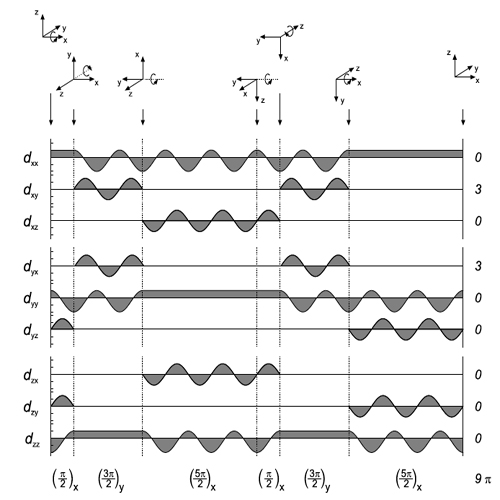J-ONLY-TOCSY: Efficient suppression of RDC-induced transfer in homonuclear TOCSY experiments using JESTER-1-derived multiple pulse sequences
20-Sep-2007
Journal of Magnetic Resonance, 2007, 189, 217-27 published on 20.09.2007
Journal of Magnetic Resonance, online article
Journal of Magnetic Resonance, online article
The main purpose of homonuclear Hartmann–Hahn or TOCSY experiments is the assignment of spin systems based on efficient coherence transfer via scalar couplings. In partially aligned samples, however, magnetization is also transferred via residual dipolar couplings (RDCs) and therefore through space correlations can be observed in COSY and TOCSY experiments that make the unambiguous assignment of covalently bound spins impossible. In this article, we show that the JESTER-1 multiple pulse sequence, originally designed for broadband heteronuclear isotropic Hartmann–Hahn transfer, efficiently suppresses the homonuclear dipolar coupling Hamiltonian. This suppression can be enhanced even further by variation of the supercycling scheme. The application of the resulting element in homonuclear TOCSY periods results in coherence transfer via J-couplings only. As a consequence, the assignment of scalar coupled spin systems is also possible in partially aligned samples. The bandwidth of coherence transfer for the JESTER-1-derived sequences is comparable to existing TOCSY multiple pulse sequences. Results are demonstrated in theory and experiment.











